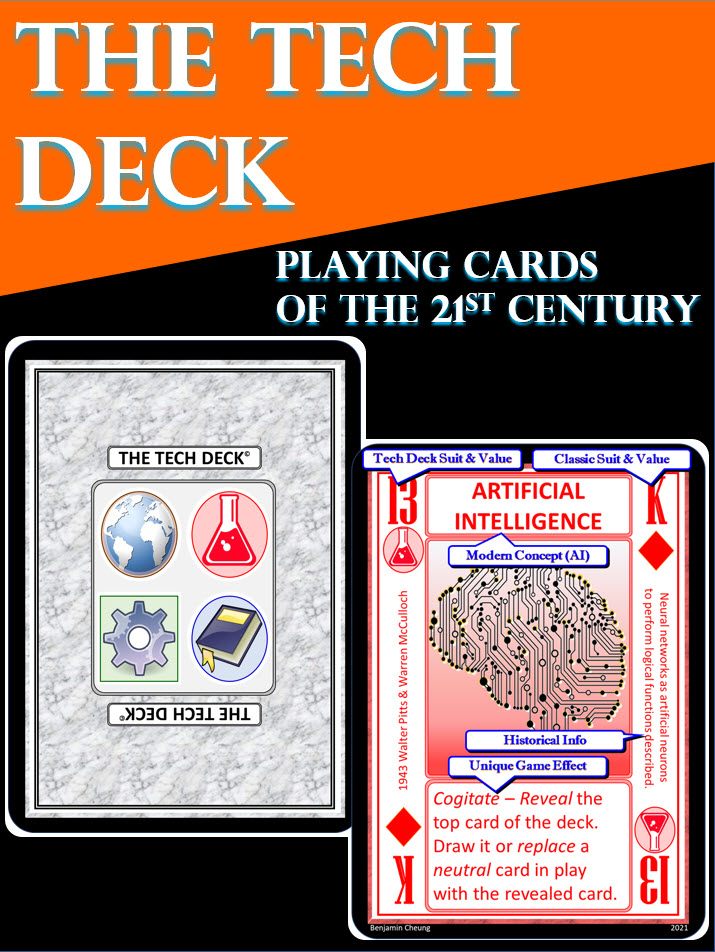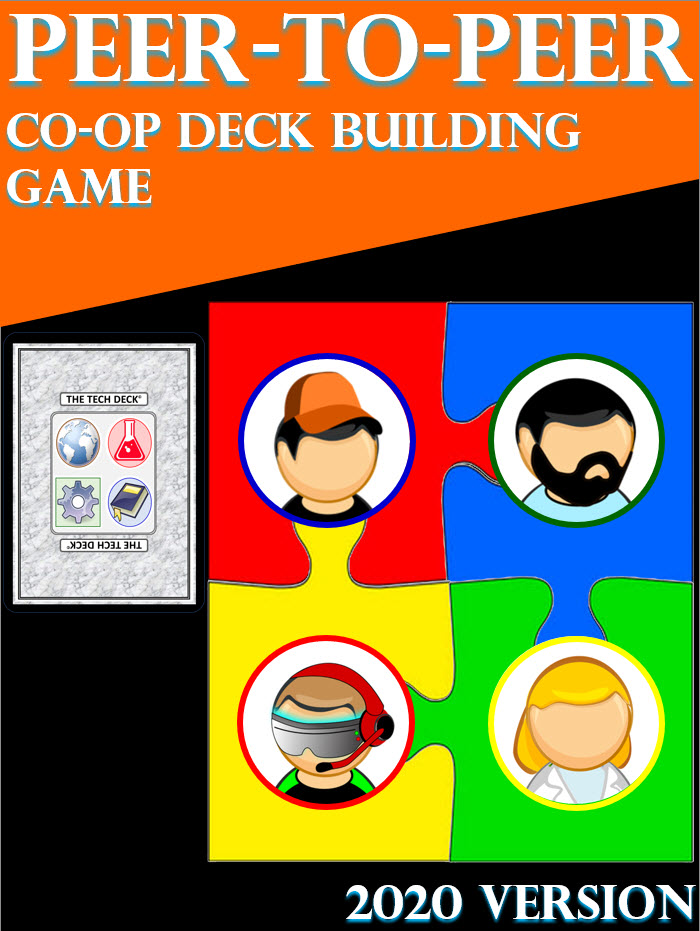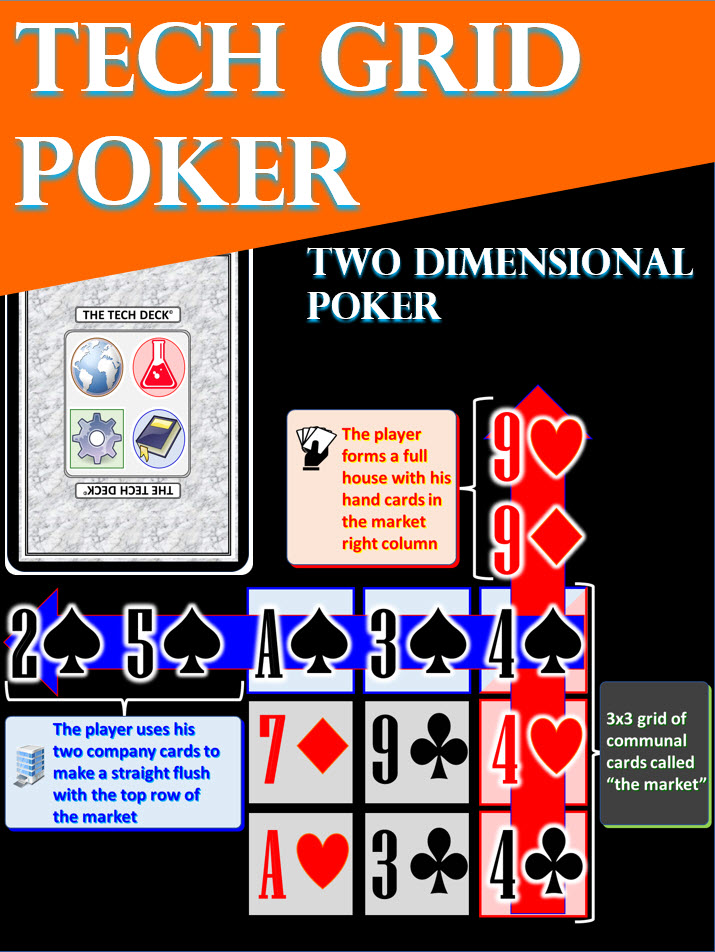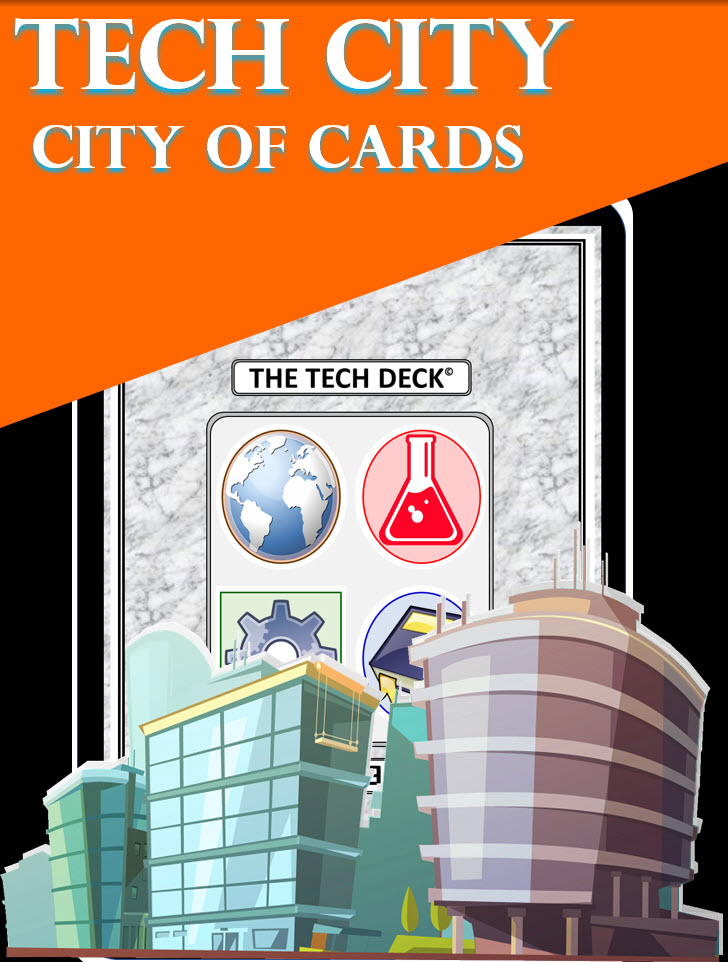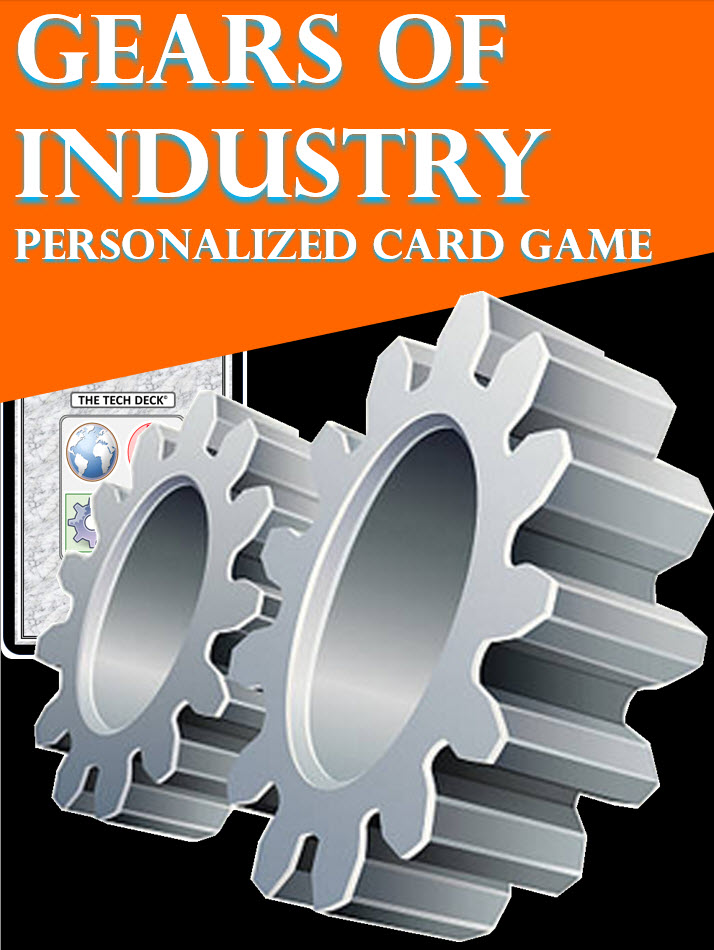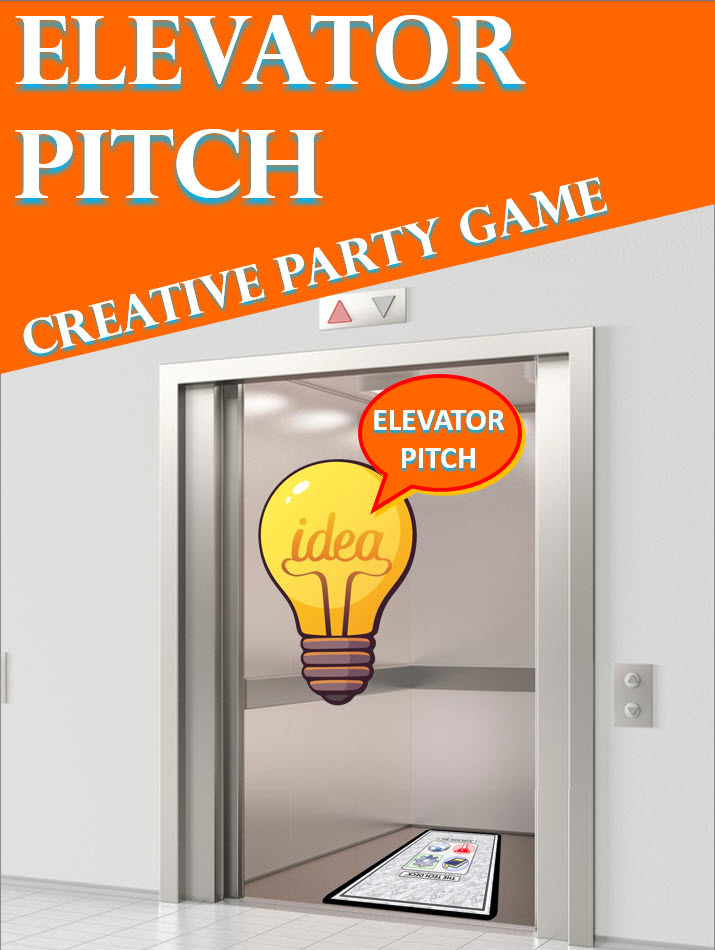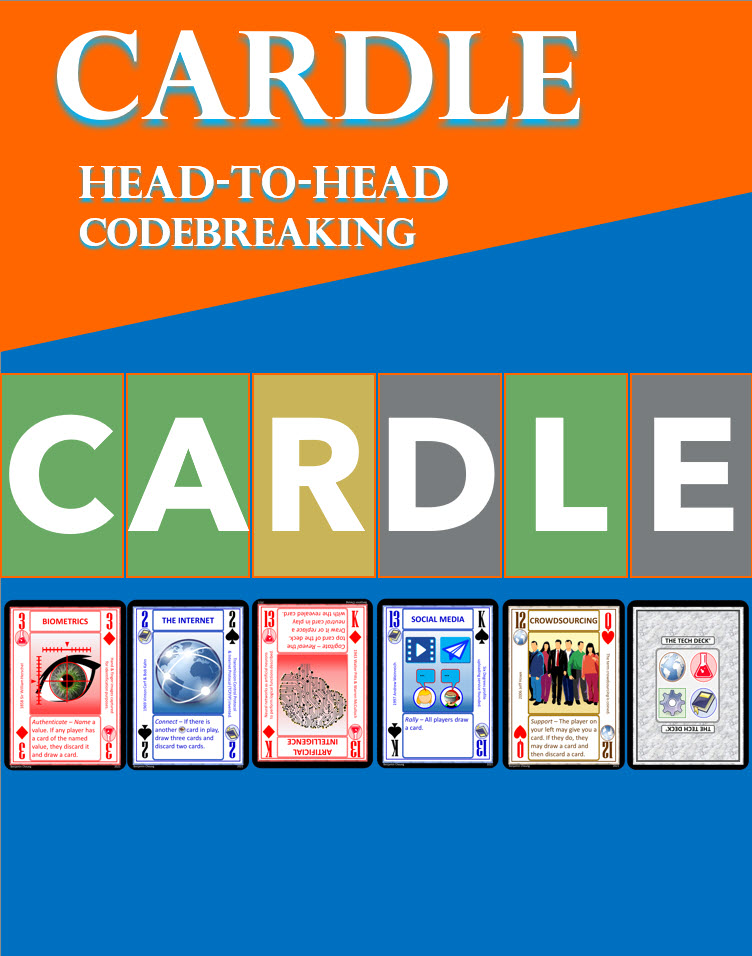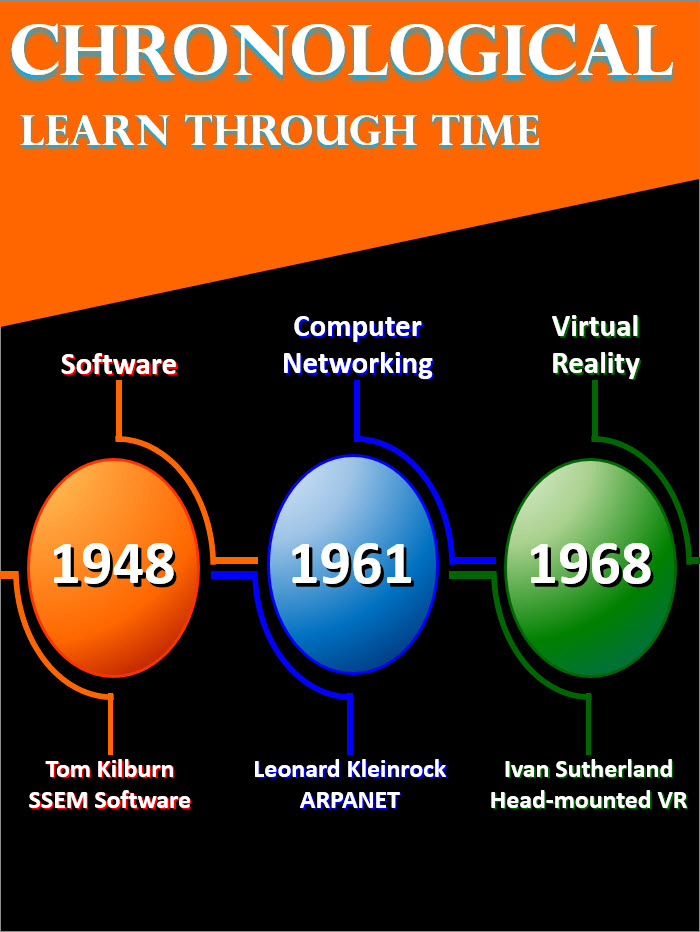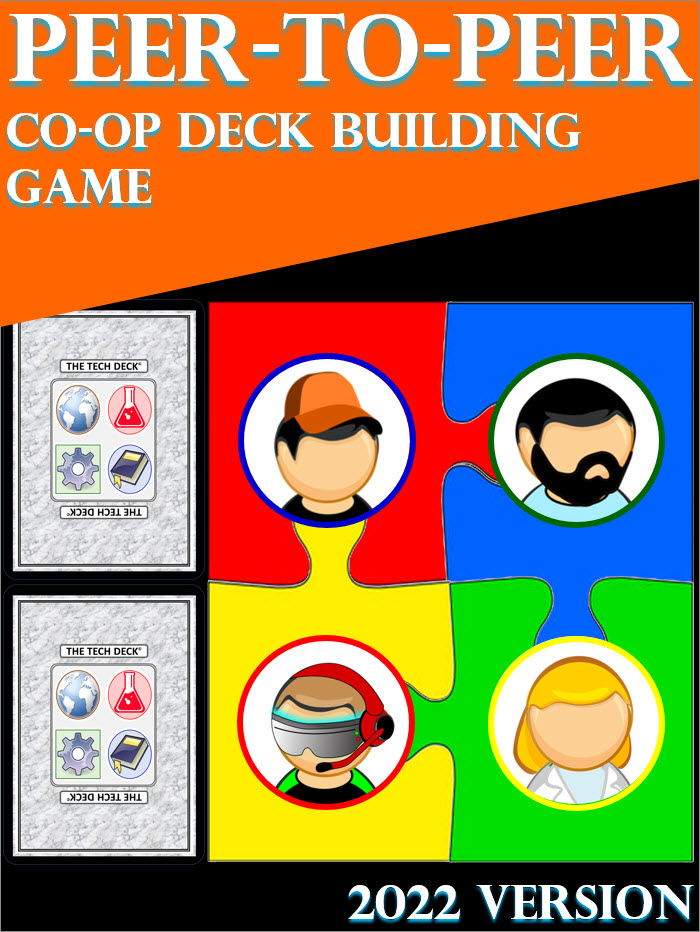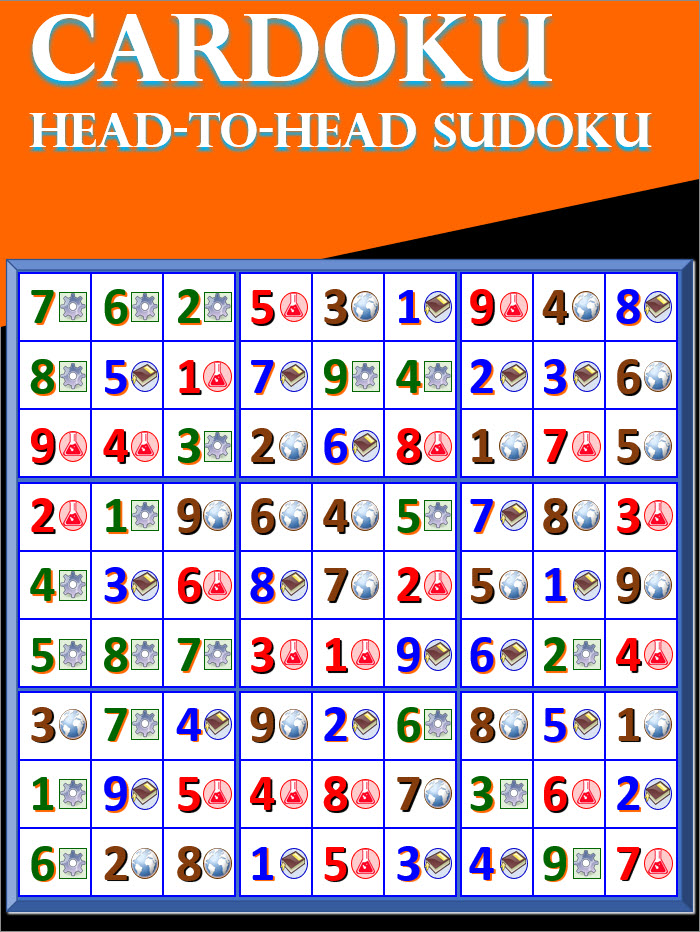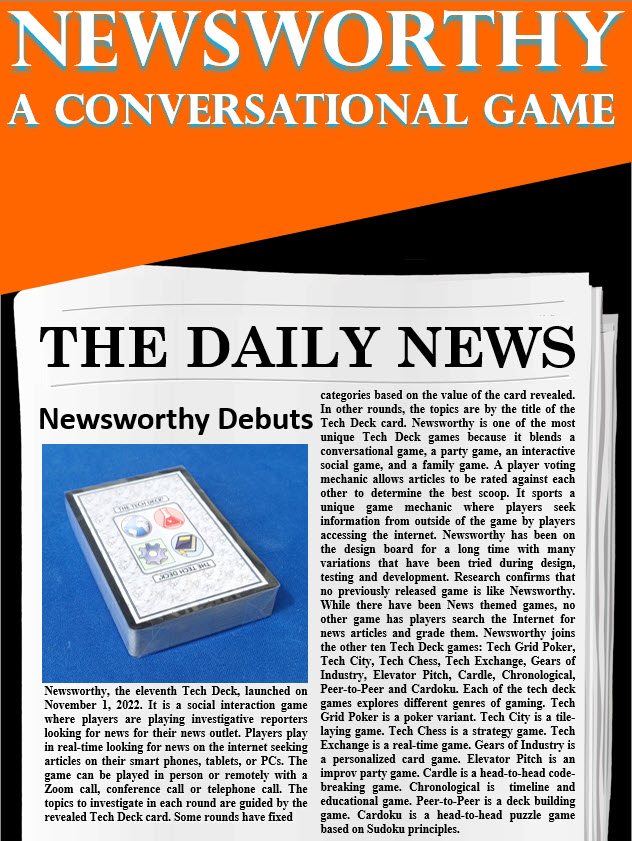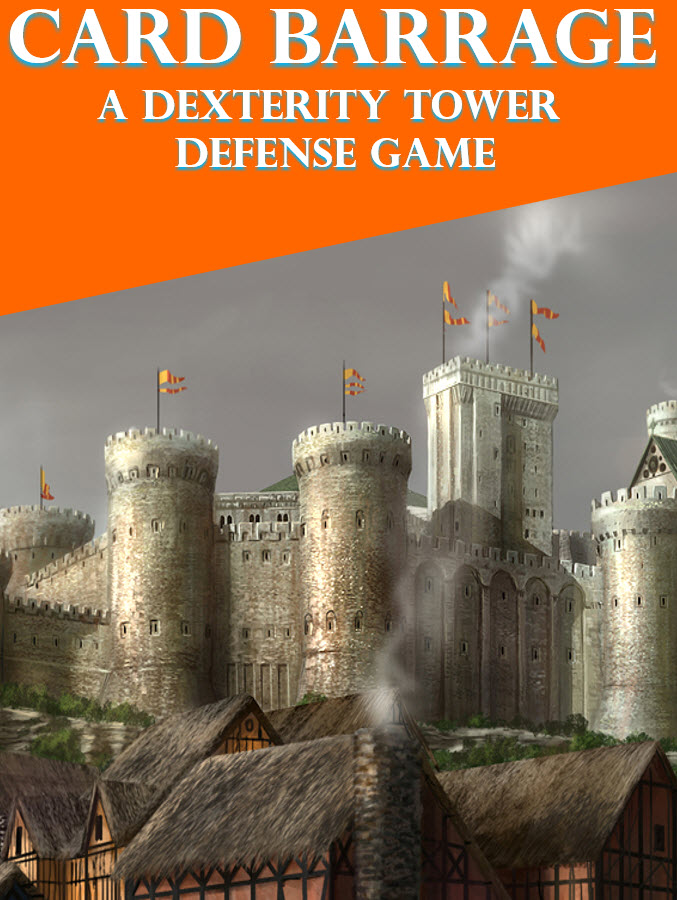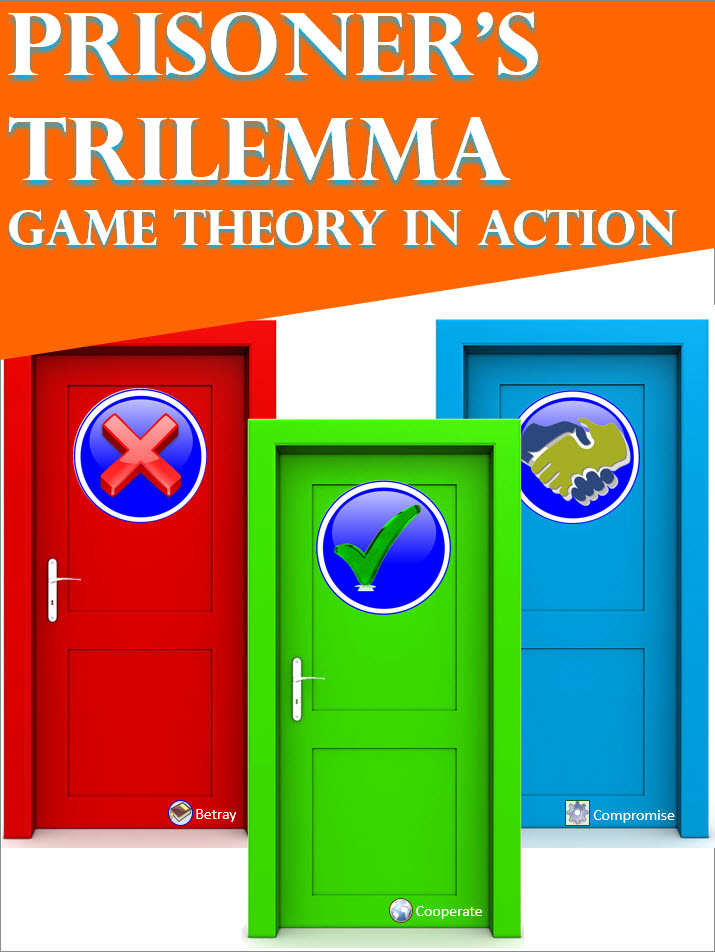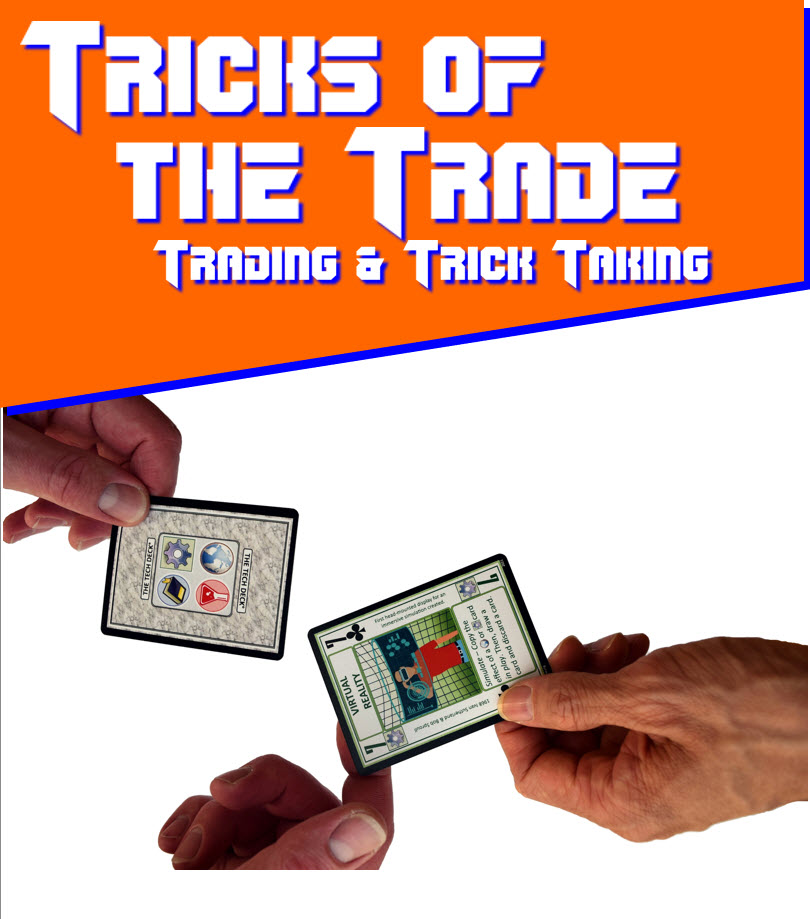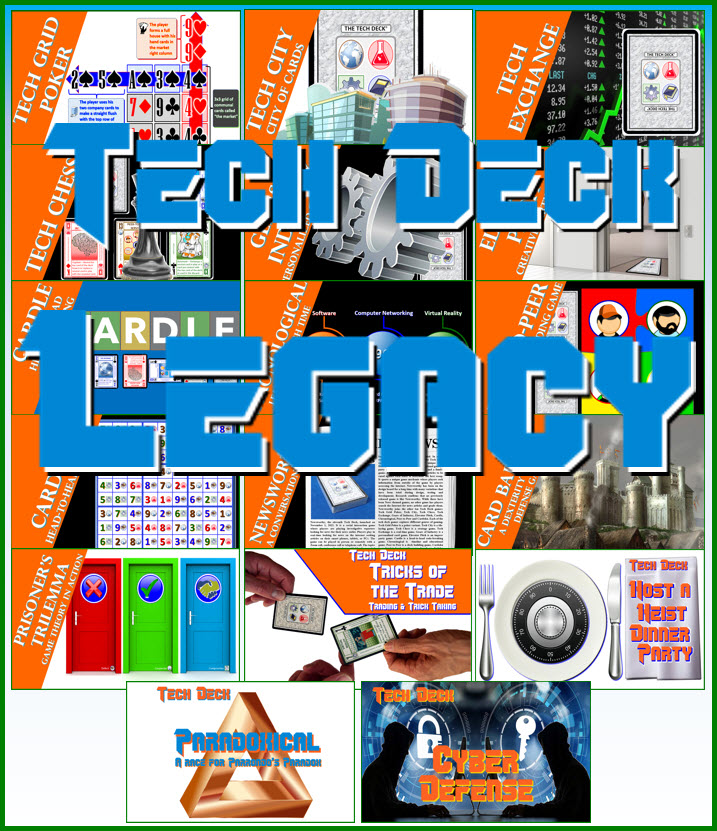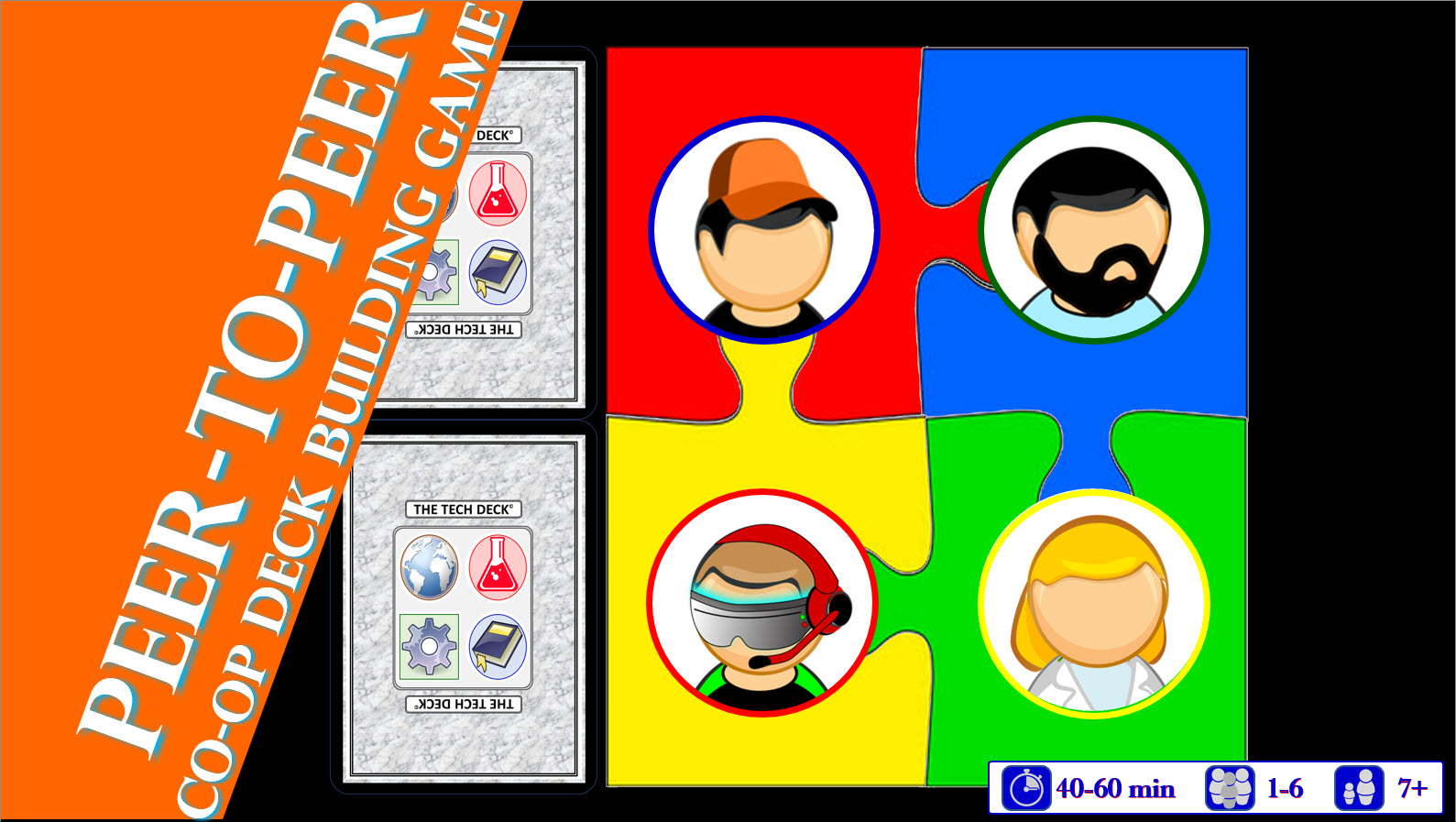
GAME CONCEPT
(Revised 2022 version for use with the second generation Tech Deck)
Peer-to-Peer is a team deck-building game using the Tech Deck, a 21st century deck of playing cards. Players divide into two teams and share a play deck and group hand.
Each individual player has asymmetric abilities on their venture cards which they can develop over time.
Teams compete to assist customers from the deck. Successfully assisted customers can be used to:
1. build their team's deck,
2. develop individual ventures, or
3. add them to their score pile. Rules for odd-number of players and solo-play follow.
The theme of the game is a 21st century modern setting. Players on a team cooperate. Teams may choose to cooperate and negotiate, and assist customers (semi-cooperative) leading to lively group discussion and dynamics. The game uses simple math and card melds to determine who successfully assists customers.
There are three mutually-exclusive competing objectives:
1. to develop your team's deck,
2. to develop individual player's venture and
3. to score customers for victory.
Teams compete to assist customers and then the team has to chose how to use that customer card towards these three key objectives.
GAME SETUP
CREATE TEAMS - For a solo game there is just 1 team. For a 2, 4, or 6-player game randomly divide the players into two groups forming 2 teams. For a 3 or 5-player game, there are still two teams but one team will have an extra player. The team with 1 fewer player will control an extra venture to balance the game.
CREATE VENTURES - Deal out two cards to each player in each team. Each player selects one card. They place the chosen card front of them as their starting venture. Shuffle the rest of the cards back into the deck.
CREATE TEAM GROUP DECKS - Each team has a group hand, group deck, and group discard. Create the team group decks according to the following diagram. Each group deck will start with 5 cards in it. Shuffle the group cards and put them face down in front of each team. The group deck and group cards are shared and used between all the players in a team.
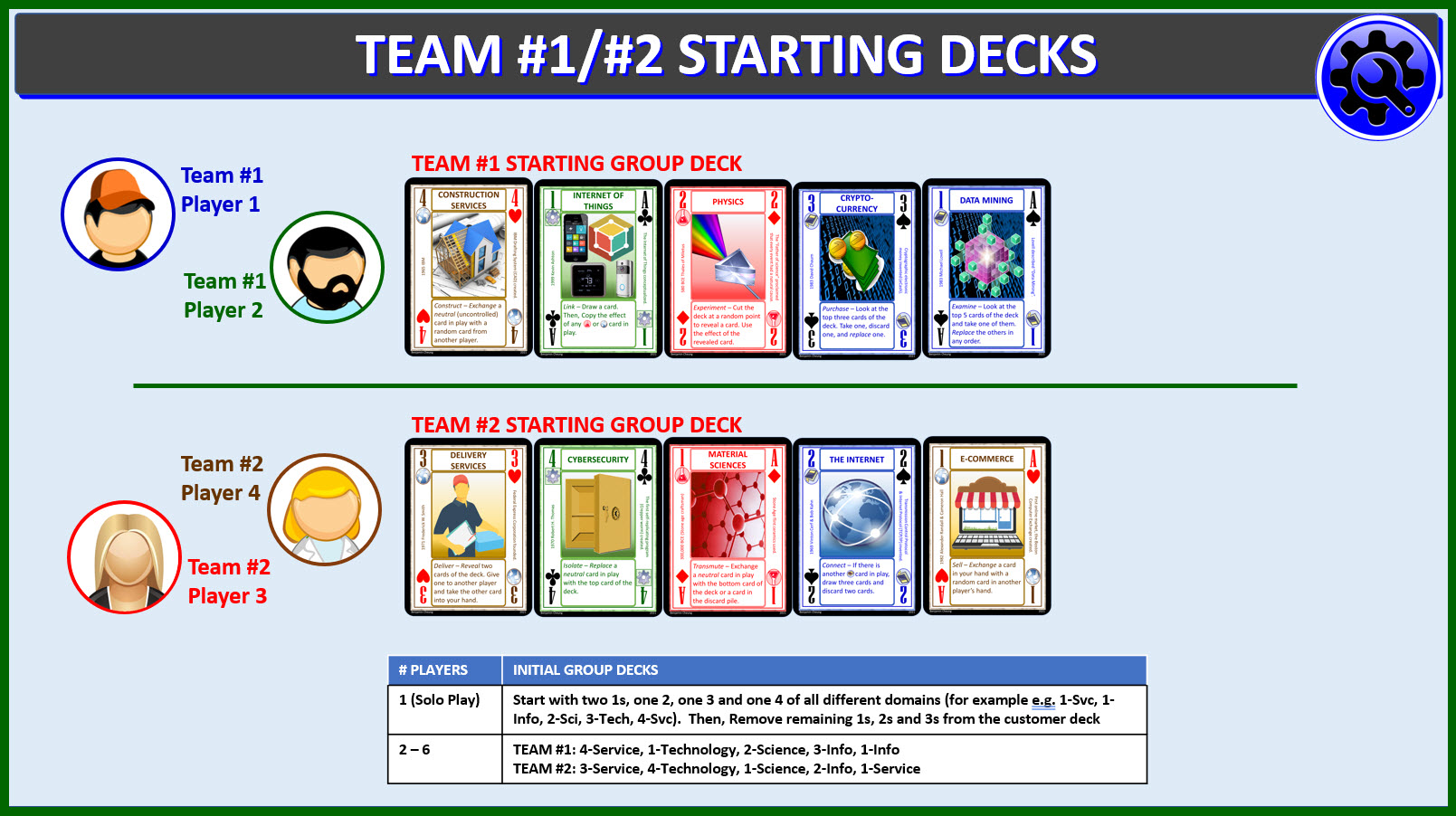
INITIAL GROUP HANDS - Draw the initial group hand. Draw 4 cards from the group deck to form the group hand. Afterwards, there will be 1 card left in the group deck.
CREATE CUSTOMER DECK & CUSTOMER ROW - The remaining Tech Deck cards are shuffled to form the Customer Deck. Place the customer deck between the two teams. Deal out two cards into the Customer Row from to the customer deck. This represents the customers that need to be assisted at the start of the game.
FIRST TEAM MARKER - The first team marker is randomly assigned to a team.
This is what the board looks like after setup.
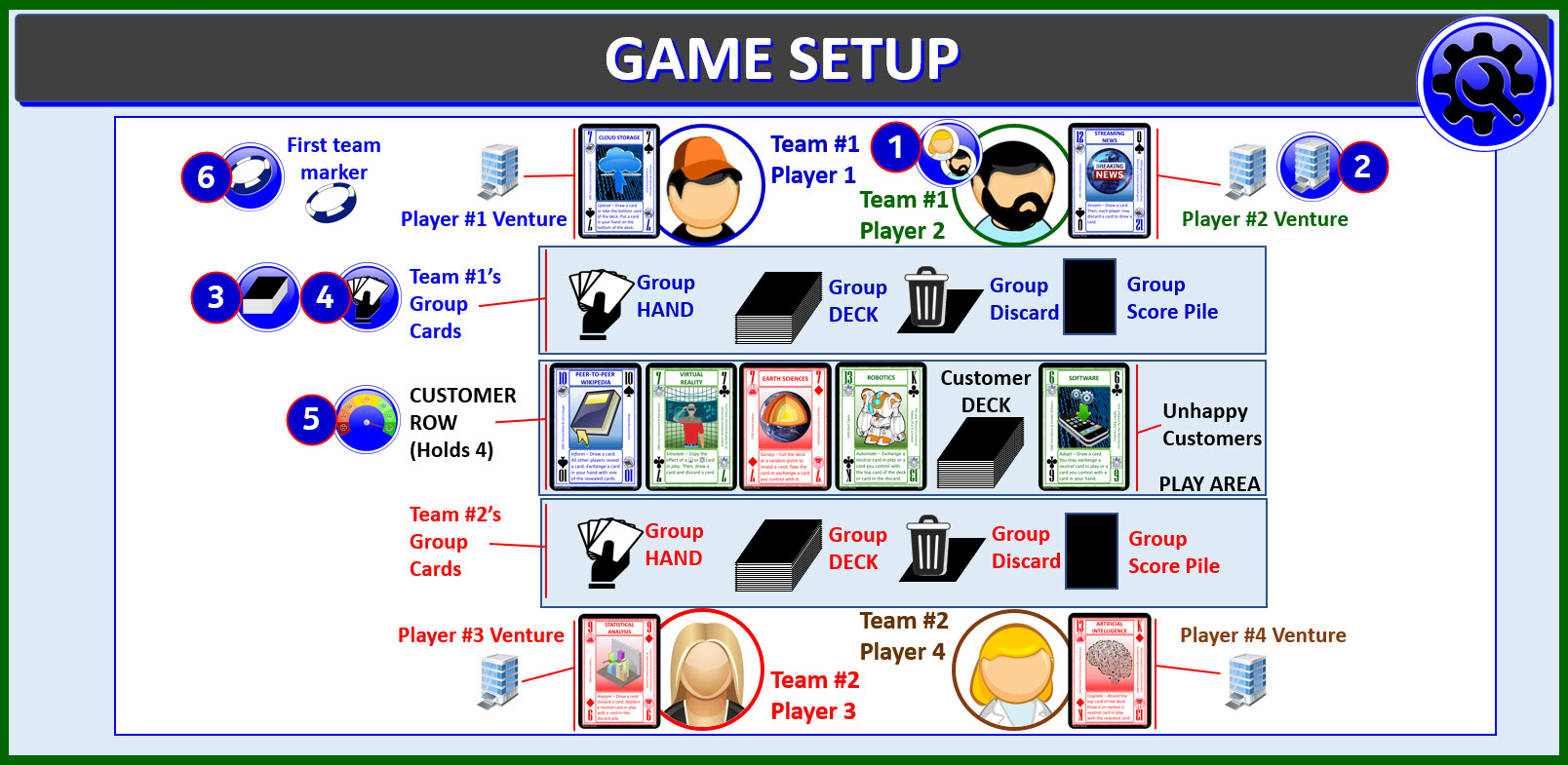
GAME PLAY OVERVIEW
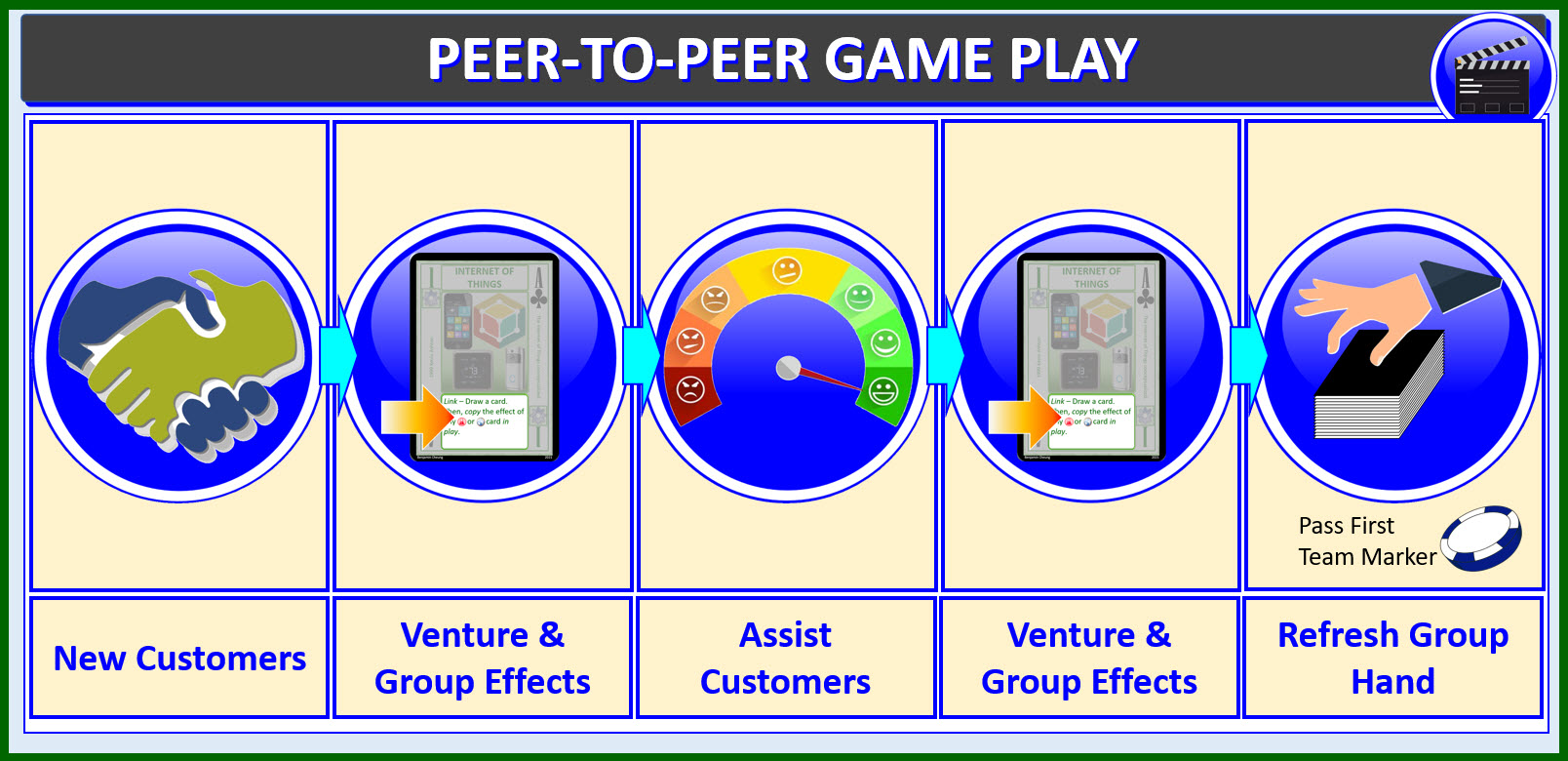

Each round is composed of phases. These are the phases in a round:
NEW CUSTOMERS - Deal new customers into the row from the customer deck.
USE VENTURES & GROUP EFFECTS - Players may use game effects from one of their venture card and group hand card each once a round.
ASSIST CUSTOMERS - Teams use group cards from their group hand to assist customers.
USE VENTURES & GROUP EFFECTS - Players may use game effects after the assist customers phase if they still have any effects available to use.
REFRESH THE GROUP HAND - Discard any remaining unused cards in the group hand and redraw 4 cards. Reshuffle the group discard deck to form a new deck as necessary.
END OF ROUND PHASE - Game end trigger is checked. First team marker is passed.
ASSISTING A CUSTOMER
ASSISTING CUSTOMERS PHASE - Following these sequence of steps during the assist customers phase:

PLAY GROUP CARDS TO ASSIST - Both teams play group cards face down simultaneously with the intention to assist a customer in the customer row. To assist a customer, one or more group cards must sum exactly to the value of the customer card and at least one of those cards must match the domain (suit) of the customer card. For example, to assist a 13-Technology card, the 11-Service and the 2-Technology card could be used assist that customer because 11+2=13 and one of the cards is a Technology card.
REVEAL GROUP CARDS - Starting with the team that does not have the first player marker, that team reveals their group card(s) and declares which customer they are wish to assist. Then the other team reveals their group card(s) and announces which customer they want to assist.
CONTESTED CUSTOMERS - If both teams want to assist the same customer, the customer is contested. To resolve the conflict, compare the group cards of both teams.
The team with the highest value group card wins the customer. If that is tied, then compare the next highest value group card.
If all card values are tied, the following domain orders, ranked highest (left) to lowest (right), are used to resolve the tie: Service, Technology, Science, Knowledge. In case where there is a further tie, the contested customer is expelled.
DEVELOP GROUP DECK - The group cards used to assist a customer are be placed into the winning team's group discard. Successfully assisted customers are either added to a group discard (to develop the group deck), scored into a team's score pile or added to a player venture.
DEVELOP PLAYER VENTURE - Successfully assisted customers may be moved to the venture of one team player. In a 1-4 player game,
any player's venture can support up to three venture cards. In a 5-6 player game, a player's venture can support 2 venture cards. If the venture limit would be exceeded, the venture is added and then one of them is moved into the team score area.
A new venture card’s effect may be used later in the same round.
SCORE CUSTOMERS - If the assisted customer card is not added into a player venture, then it is either placed into the winning team's assisted customer score pile or added to the group discard.
RETURN GROUP CARDS - If there was a contested customer, the losing team's group cards are returned to the losing team's group hand. They have a chance to use those group cards later to assist any remaining customers still in the customer row. If the customer was expelled, both teams return their group cards.
USE GROUP and VENTURE EFFECTS - Teams may use group and venture effects in between assisting customers. The addition of new venture cards may open the possibility to use new game effects.
REPEAT PROCESS - Repeat steps 1 through 8 to assist remaining customers in the customer row until neither team can further assist customers.
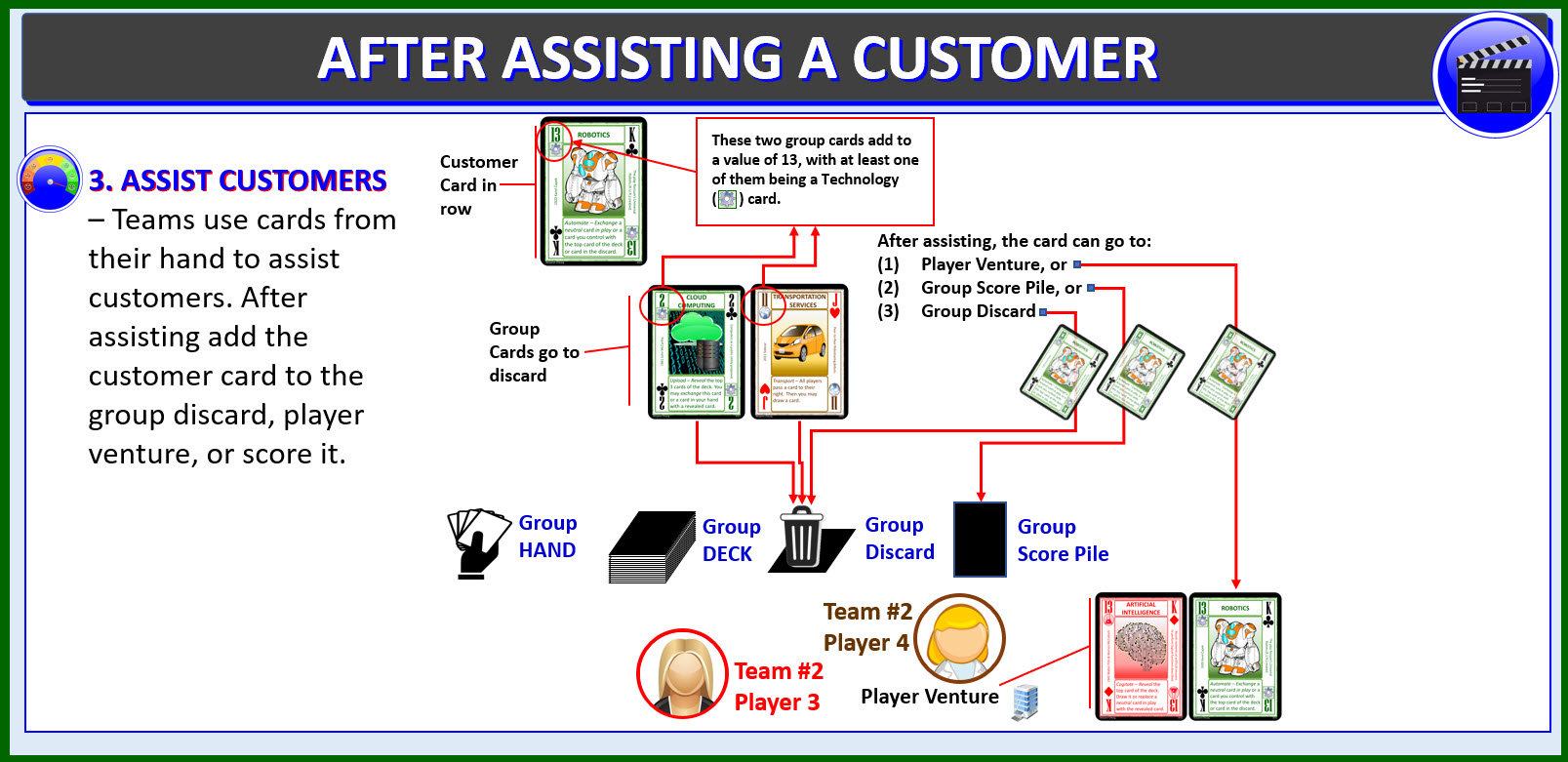
END OF ROUND PHASE - At the end of round phase checks for the end of game.
END GAME TRIGGER - The game ends with all players losing when there are 3 unhappy customers in a 2 player game; 2 unhappy customers in a 3-4 player game; 1 in a 5-6 player game; 4 unhappy customers in a solo game.
END OF GAME TRIGGER - If there are no cards in the customer deck during the end game trigger check, then the game ends and proceed to End of Game Scoring.
END OF GAME SCORING - The team that scored the most successfully assisted customers in their score pile wins. Each successfully assisted customer scores 1 point. If there is a tie, sum the value of all of your scored customers as a tie-breaker. If there is still a tie use the domain rank as a tie breaker: (Service-Highest), Technology, Science, (Information-Lowest)
PASS THE FIRST TEAM MARKER - The first team marker is passed to the other team.
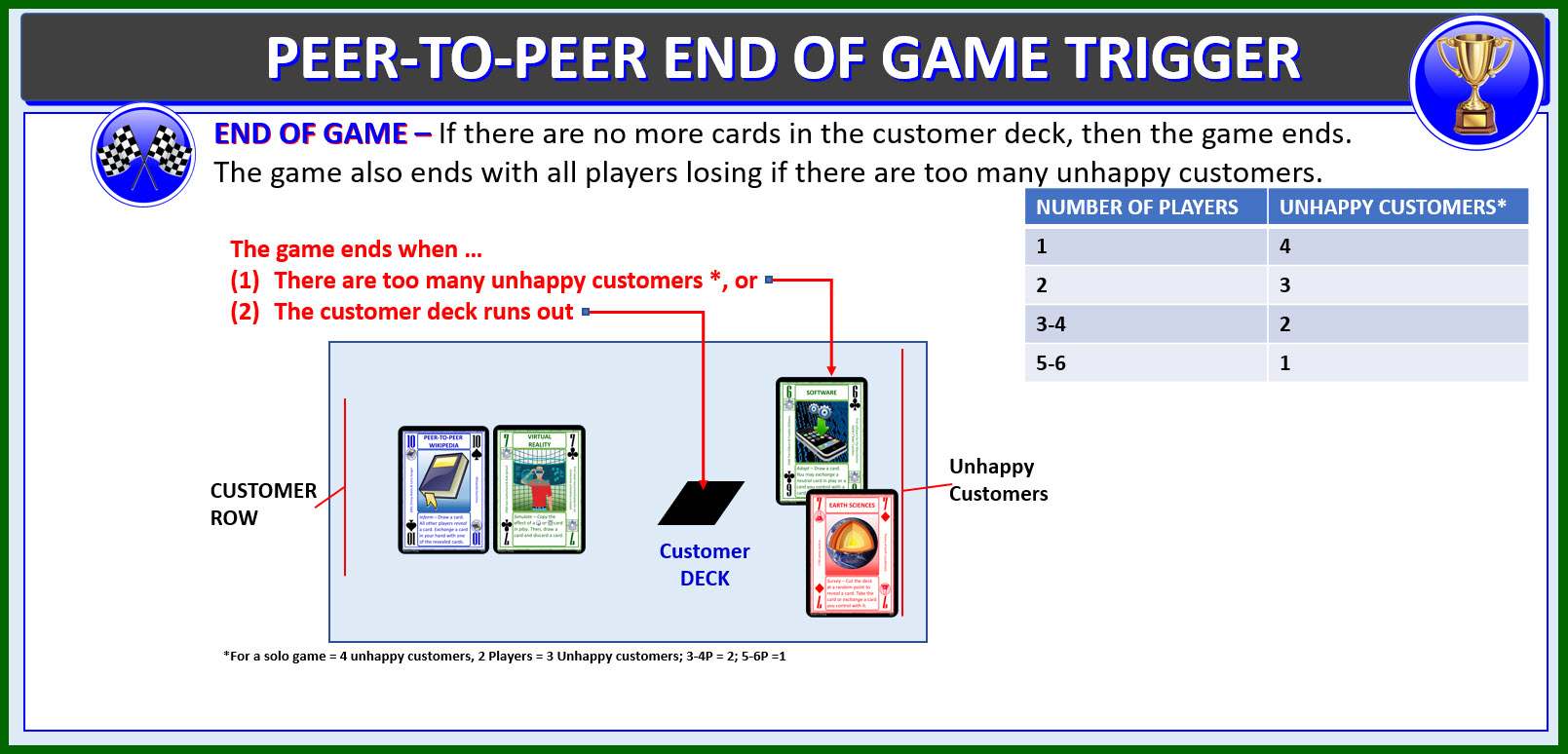
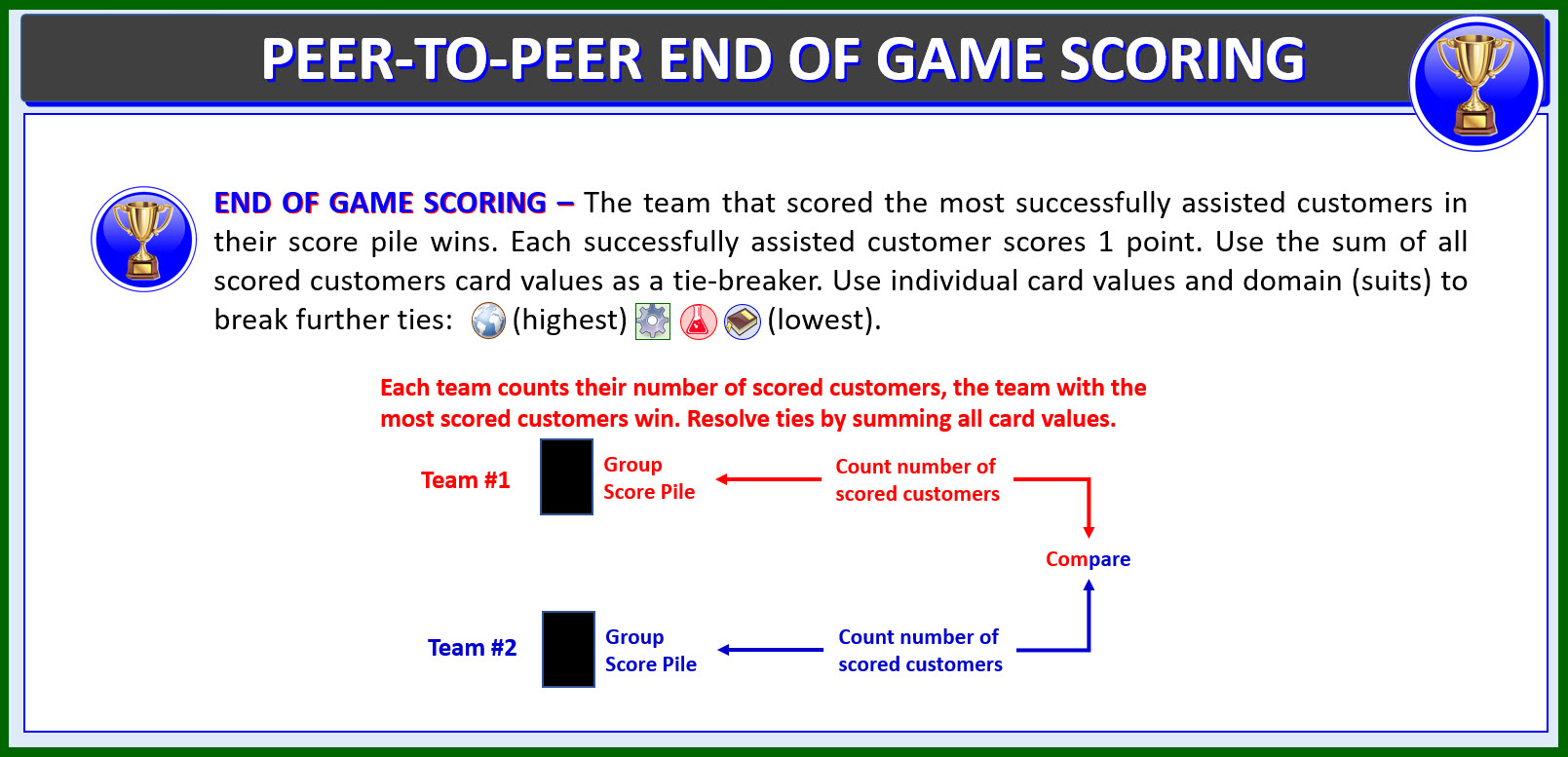
DOWNLOAD THE RULES
Peer-to-Peer Full Rules:
Peer-to-Peer Rules
INTRODUCTION VIDEO
Watch a video on the introduction of Peer-to-Peer.
The introduction video describes the basic concepts, objectives and an
introduction to the Tech Deck.
PLAY GUIDE VIDEO
Watch a play guide video for Peer-to-Peer.
The play guide video is an in depth video on how to setup the game,
and all the steps involved in playing the game.
ENTRY ON BOARD GAME GEEK

You can read and explore the
BoardGameGeek entry for Peer-to-Peer.
PUBLICATION INFORMATION
·
Published: August 1, 2022
·
Format: Card Game
·
Elements: 54 Cards
·
Size: 3.75" x 2.8751" x .875"
ORDERING PEER TO PEER
·
To purchase the Tech Deck:
Contact Me
EXPLORE OTHER GAMES
